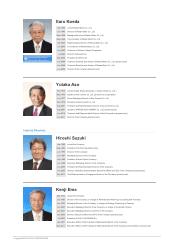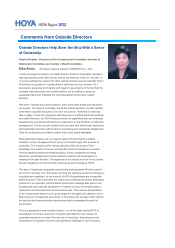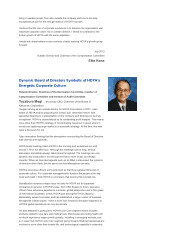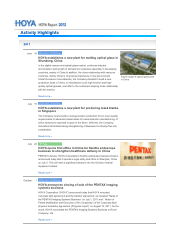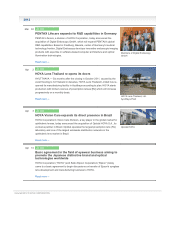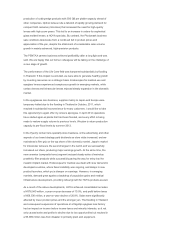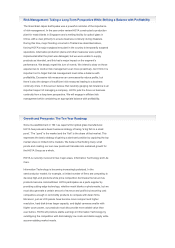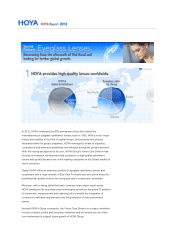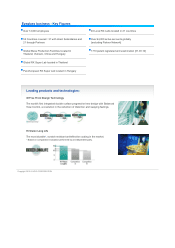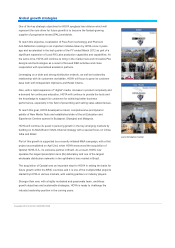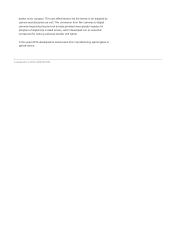Pentax 2012 Annual Report Download - page 50
Download and view the complete annual report
Please find page 50 of the 2012 Pentax annual report below. You can navigate through the pages in the report by either clicking on the pages listed below, or by using the keyword search tool below to find specific information within the annual report.
The Great East Japan Earthquake was a powerful reminder of the importance
of risk management. In the year under review HOYA constructed a production
plant for mask blanks in Singapore and a melting facility for optical glass in
China, with a view primarily to ensure business continuity during disasters.
During this time, major flooding occurred in Thailand as described above,
forcing HOYA's major eyeglass lens plant in the country to temporarily suspend
operations. Alternative production plans and other measures were quickly
implemented after the plant was damaged, but we were unable to supply
products as intended, and this had a major impact on the segment's
performance. We deeply regret this turn of events. We intend to draw on these
experiences to conduct risk management even more proactively, but I think it is
important not to forget that risk management must strike a balance with
profitability. Excessive risk measures can unnecessarily reduce profits, but
there is also the danger of insufficient risk measures leading to a business
continuity crisis. In this sense I believe that carefully gauging risk tolerance is an
important aspect of managing a company. HOYA puts the focus on business
continuity from a long-term perspective. We will engage in efficient risk
management while considering an appropriate balance with profitability.
Since its establishment in 1941 as Japan's first optical glass manufacturer,
HOYA has pursued a basic business strategy of being “a big fish in a small
pond.” The “pond” is the market and the “fish” is the share of that market. This
expresses the basic strategy of gaining a dominant position by capturing the top
market share in limited niche markets. We believe that finding many small
ponds and creating our own new ponds will translate into sustained growth for
the HOYA Group as a whole.
HOYA is currently involved in two major areas, Information Technology and Life
Care.
Information Technology is becoming increasingly polarized. In the
semiconductor market, for example, a limited number of firms are competing to
develop high-end products while price competition dominates the tail-end as
products become commoditized. HOYA participates as a parts supplier by
providing cutting-edge technology, whether mask blanks or photomasks, but we
must also generate a certain amount of revenue and profits by becoming cost
competitive enough in commodity products to compete with Asian firms.
Moreover, just as LCD panels have become more compact and higher
resolution, hard disk drives larger capacity, and digital cameras smaller with
higher zoom power, our products must also provide more added value than
ever before. HOYA will produce stable earnings in Information Technology by
outstripping the competition with dominatingly low costs and stable supply while
accommodating market needs.
Risk Management: Taking a Long-Term Perspective While Striking a Balance with Profitability
Growth and Prospects: The Ten Year Roadmap



